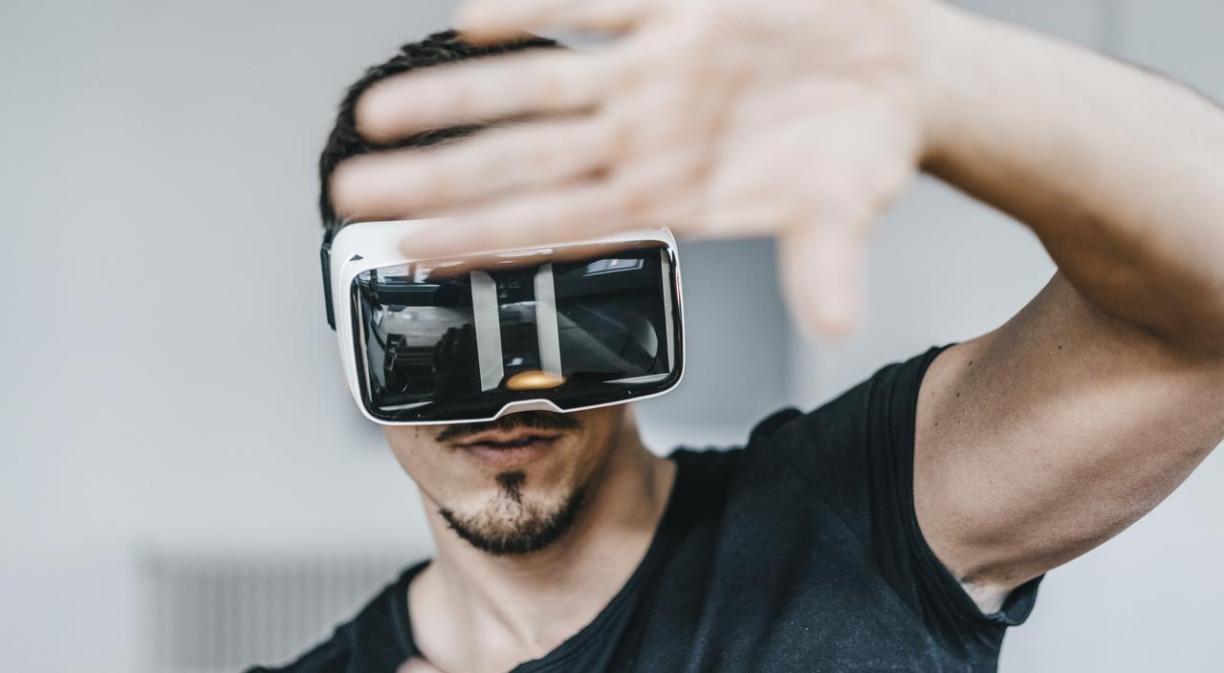Virtual reality can be experienced as something authentic through glasses or a helmet and in its evolution it can also be felt on a mobile phone or any electronic device.
Types of VR
Generically three types of virtual reality (VR) can be considered
- Non-immersive virtual reality. The user is more aware that this is a simulated reality. The best example of this is video games, whose graphics and sound and touch devices in the scenes through increasingly developed controls achieve an experience of authenticity.
- Semi-immersive virtual reality. It is a further step in the blurred sensation of being closer to the virtual world than the real world, which can be considered a mixed reality as virtual and physical elements interact. The clearest example is the flight simulation chambers, which have a physical space similar to a real cockpit, but instead of glass they have screens on which the simulation is projected. By its nature, this technology is best used in the industrial and education sectors, as it greatly facilitates interaction with information without the need to completely leave the real environment.
- Immersive virtual reality. This is the one that offers the ultimate immersive experience in which the physical and the digital are virtually indistinguishable. A typical immersive VR device consists of a headset connected to a computer, which has a high-resolution screen and occupies the user’s entire vision, as well as motion sensors attached all over the body.
Virtual reality applications
The technological development of virtual reality is immense, with applications covering all areas of research: medicine, culture, education, architecture, defence and industry in general, as well as those more familiar to the general public in entertainment and audiovisual media. Iberdrola highlights the following:
- Medicine. The Advanced Centre for Scientific Research (CSIC in its original initials) has managed to reduce the effects of Parkinson’s disease in several patients by applying a VR treatment. Likewise, researchers at atlanTTic, the University of Vigo‘s telecommunications technology centre, have named Panoramix, a video game that detects that something is wrong with the brain before Alzheimer’s appears through an application that captures the hidden signs of cognitive deterioration and speeds up diagnosis in people who are reluctant to go to the doctor.
- Education. In classrooms, the use of virtual reality enables students to retain knowledge better and helps students with learning difficulties. An example of how schools have to adapt to real-life situations, most clearly and recently the coronavirus pandemic, can be found at the Optima Classical Academy school in Naples (Florida, USA), one of the first to adopt virtual reality in the 22-23 school year. At this virtual school on Florida’s west coast, “students receive daily live instruction in VR” through “a real teacher” who teaches “synchronously on a purpose-built social virtual reality platform”, Adam Mangana, CEO of Optima Domi, the school’s curriculum provider, told Efe.
- Architecture. Virtual reality helps architects to better conceive the space and to present the project to clients.
- Industry. Digital Twins are digital twins of physical objects with which factory operators can practice and verify in a virtual world.
- Culture / Art. Some museums and galleries offer virtual tours or immersive experiences to help understand the history and culture associated with each work. This is the case of the Prado Museum which, after two centuries, has been rejuvenated with a complete digitalisation that makes it easier for visitors to book tickets and guided tours quickly and conveniently, as well as introducing a new virtual visit, thanks to Prado Puerta Digital, a project managed by Telefónica.
- Military. The UK Ministry of Defence uses VR to train the military in simulated combat environments.
- Entertainment. Users can enter the video game scene and practice risky sports without leaving their couch, as well as in the audiovisual offer with films and series that confuse or intermingle reality and fiction, with the film Matrix as one of its greatest exponents
- Media: Immersive journalism transports the user to the scene of events with 360° videos broadcast live via streaming.
- Science: As NASA uses virtual reality “customised in 3D that animated the speed and direction of 4 million stars in the Milky Way, astronomer Marc Kuchner and researcher Susan Higashio gained a new perspective on the stars’ movements, improving our understanding of star clusters,” revealed the US space agency.
Equally, companies are adapting to new realities. In this way, Telefónica sees the metaverse as an evolution of the Internet supported by a set of technologies that are transforming the digital economy such as augmented reality and virtual reality, the creation of new value assets such as NFTs, business models based on web3 architectures and cryptocurrencies.
David Chalmers, virtual reality guru
Perhaps the most recognised VR guru is Australian philosopher David Chalmers, professor at New York University, who proclaims that “Simulations are not illusions” in his new book published in 2022, ‘Reality+: Virtual Worlds And The Problems of Philosophy’ (W. W. Norton & Company).
“Virtual worlds are real. Virtual objects are real. They are not the same as non-virtual objects, but a virtual chair is created by digital processes, just as a physical chair is made of atoms and quarks. We will never be able to prove that we are not in a computer simulation because any evidence of ordinary reality could be simulated,” says Chalmers.
VR, a future with a long way to go
As we have seen, virtual reality is already present in our lives, both in the leisure, professional, industrial and scientific spheres, but it has a long way to go.
This development of VR relates to virtually all human activities, including, for example: Training and learning, communication, marketing and advertising, trade, machinery and equipment, industry 4.0.
